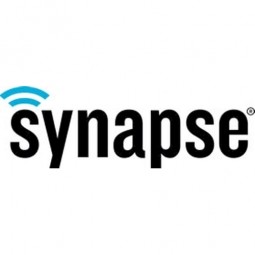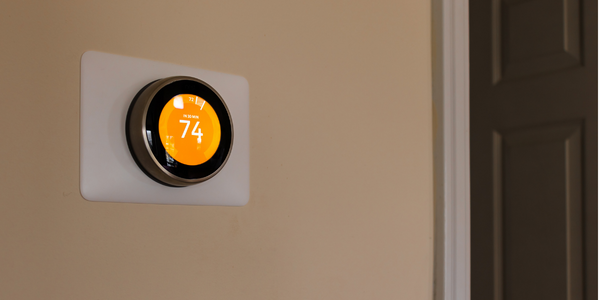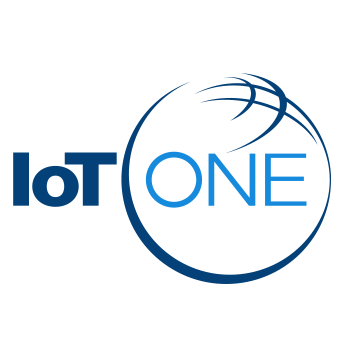Synapse Wireless

Overview
|
HQ Location
United States
|
Year Founded
2008
|
Company Type
Private
|
Revenue
$10-100m
|
|
Employees
51 - 200
|
Website
|
Twitter Handle
|
Company Description
Synapse Wireless specializes in providing software, hardware, and networking solutions to develop, deploy, and manage the "Things" in IoT. They enable corporations, product companies, and business partners to make their products smarter and to manage products wirelessly. By connecting the physical world of "Things" to the digital world of IoT, their customers can monitor, control, optimize, and manage their products in ways and places never before possible. Synapse provide an Embedded Application Platform called SNAP, which is a comprehensive framework for developing, connecting, controlling, and managing networks of “Things” (devices and gateways) securely and reliably. SNAP easily integrates with IoT Cloud platforms as well as traditional enterprise IT systems. Synapse was founded in 2008 and is a subsidiary of McWane, Inc., one of America's largest privately owned companies. The company has over 100 engineers, technologists, sales, and marketing professions covering the multiple disciplines required to develop and support IoT solutions. Synapse is located in Huntsville, Alabama, which is a major science and engineering center in the U.S. and the home of NASA’s Marshall Space Flight Center
IoT Snapshot
Synapse Wireless is a provider of Industrial IoT application infrastructure and middleware, functional applications, networks and connectivity, sensors, and infrastructure as a service (iaas) technologies, and also active in the agriculture, automotive, buildings, cities and municipalities, equipment and machinery, mining, and transportation industries.
Technologies
Use Cases
Functional Areas
Industries
Services
Technology Stack
Synapse Wireless’s Technology Stack maps Synapse Wireless’s participation in the application infrastructure and middleware, functional applications, networks and connectivity, sensors, and infrastructure as a service (iaas) IoT Technology stack.
-
Devices Layer
-
Edge Layer
-
Cloud Layer
-
Application Layer
-
Supporting Technologies
Technological Capability:
None
Minor
Moderate
Strong

Supplier missing?
Start adding your own!
Register with your work email and create a new supplier profile for your business.
Case Studies.

Case Study
Bicycle
PBSC Urban provides municipalities throughout the world a bicycles-for-lease and an accompanying fleet management system. To pull off that feat, PBSC Urban needed a way to easily transmit essential data from their bicycles to the various bike station kiosks located throughout the cities they serve.

Case Study
Improved Monitoring in Industrial Manufacturing Facility
When your crane is moving tons of magma-hot iron, you can’t afford an unexpected failure. McWane Ductile knew monitoring the crane motor metrics within their facility could help prevent a mechanical failure that would strand an enormous bucket of molten metal overhead. Unfortunately, their legacy wired monitoring system couldn’t work with moving objects in this extreme environment. If they could integrate wireless capabilities into their existing equipment they could extend their monitoring capabilities without starting over from scratch.

Case Study
Breaking Ground in Smart Agriculture
Semios Technologies decided to create a product that radically changes how orchard growers handle pest control. The key to the product is the use of new pesticide-free pheromones. To turn this idea into reality, they needed to create a system that could sense where the pests were breeding and automatically dispense the pheromone-based pest control in response. Semios realized their largest challenge would be getting a system that worked in an environment with no dedicated power and where wireless signals needed to travel through the hundreds of acres of dense foliage. That is where SNAP-based technology from Synapse provided the answer.

Case Study
Smart Traps
Well known for their mouse and rat traps, Victor pest control constantly attempts to use new technology to create better products for their customers. Seeing an opportunity to improve their product offering, the product developers at Victor decided to create an intelligent mousetrap that lets users know that it caught a mouse—thus preventing the user from having to check the trap every day. In order to make this happen, Victor needed a way to send signals from battery-powered traps to an email or cellphone. Because the traps run on batteries, Victor would need something low-powered but could still send a strong signal inside a building.
Case Study
Tracking Vehicles in a Snap
Fiat Chrysler Automobile needed to keep track of their powered industrial vehicles (PIVs) throughout the 560 acres of the Chrysler Technology Center and World Headquarters. The Chrysler facilities team wanted an easy way to know where all of the PIVS were located at any given time. The team had been encountering issues with the PIVs rented to third-parties not being returned to the designated areas promptly, so they wanted an asset tracking system to help them find the missing PIVs. Unfortunately, all of the commercial systems they looked at would cost nearly a million dollars. The facilities team needed a more cost-effective way to track the PIVs. So they decided to create their own.

Case Study
Making Landfills Safer
While we not often think about it, the breakdown of matter in landfills potential produces methane and hydrogen sulfide gases. These gases present a risk of explosion (as they are both flammable) and hydrogen sulfide serves as a health hazard—potentially causing death if breathed in massive doses. Given the volatility of these two by-products of landfills, many local governments seek out better ways to monitor the potential production of these gases in their landfills. Moreover, seeing the needs of these local governments, Plexus Controls, a Canadian-owned designer and manufacturer of wireless monitoring and control products, decided to create a product for monitoring methane and hydrogen sulfide gases for landfills.

Case Study
Re-Inventing Food Safety
Sigma Industrial Automation formerly specialized in creating weights and scales for the food industry when they realized their customers were doing the majority of their measurements by hand. Seeing an opportunity to expand their product offering and improve their customers’ experience, Sigma team members decided to explore the creation of wireless equipment that could send measurements to a computer. Sigma just needed a way to make a product that met their customers’ needs—and a way to do it fast.

Case Study
Smart Technology Brings the Heat to Optimize Steam Heating Systems
Industrial facilities, municipalities, hospitals and universities nationwide depend upon steam carried through pipes to heat their buildings. Unfortunately, the reliability of steam systems also leads to them being forgotten or poorly maintained until it’s too late, resulting in uninsulated distribution components and faulty steam traps (leaks) that can lose hundreds or even thousands of dollars a day in wasted energy. That’s why Embedded Energy Technology (EET) teamed up with Thermaxx Jackets to create a next-generation solution for steam pipe insulation. They wanted to develop a product that not only insulated pipes, but also used technology monitor the system for leaks and heat loss. Ideally this solution would install in minutes, have no wires, and avoid the need for costly construction.

Case Study
ULINE's Smart Lighting Solution: Enhancing Efficiency and Impacting Bottom Line
Uline, a leading distributor of shipping and packaging solutions in North America, was facing a challenge with its lighting system. The company, known for its customer service, order accuracy, quick delivery, and low prices, needed its facilities to operate at peak efficiency. This included the 3,014 lights in its 800,000 square foot facility in Lacey, Washington. The company's Director of Engineering, Mike McConnell, was tasked with finding efficiency in every corner of the facility, including optimizing light to improve both operational and financial performance. The company had identified a luminaire that fit their needs, but struggled to find a reliable lighting controls provider that could deliver a solution at this scale to meet stringent energy codes and zoning requirements. The lights in the entire facility had to operate as a single system with one interface, adjust to natural lights from the skylights for daylight harvesting, and work with Uline’s existing IT systems. Other providers offered a mix of wired and wireless systems that were complex, hard to install and maintain, and couldn't scale to meet the size of the facility.



